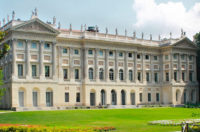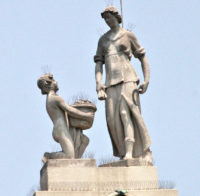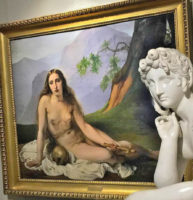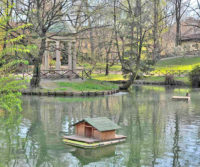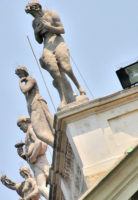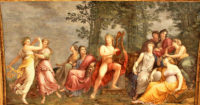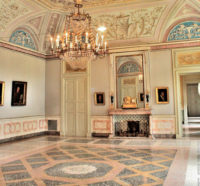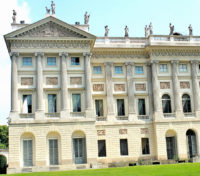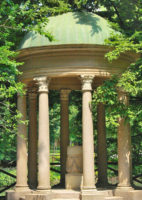This building is commonly called the ’’Royal Villa” but it was built by the Viennese architecht Leopold Poliak in 1790 as the home of Count Lodovico Barbiano di Belgioioso.
The entrance opens onto Via Paiestro overlooking the public gardens, but the main facade is the one which overlooks the “English” garden with its rock gardens and little lake.
The architecture acquires a particualr grace through the harmonious equilibrium of its element. The villa was bought in 1803 by the Cisalpina Republic and given to Napoleon who lived there with his wife Josephine. Also his stepson Eugene of Beaharneais, viceroy of the Italian Kingdom, lived there. Later, the Austrian Marshal Radetzky died there.
In 1859 it passed into the hands of the Savoy family, and 1919 it became the property of the City of Milan. Since 1921 it has housed the Modern Art Gallery, originally housed in the Sforzesco Castle.
After the repairs following the wartime bomb damage, it was once more opened as an art gallery. In 1955 a new department of contemporary art was added. The furnishing, rich in neo-classical furniture, giver the rooms an aristocratic air. In the great hall, the “Apollo citharist surrounded by the muses” painted on the vaulted ceiling by Andrea Appiani in 1811, is one of the best works of this neo-classical artist.
The museum contains nineteenth century works of art from Francesco Havez to Tranguillo Cremona, it contains his celebrated “Falconiere” (Falconer); Giovanni Segantini’s “Le due madri” (The two mothers); Mose Bianchi’s “Traversata in Laguna” (Crossing the Lagoon): Domenico Induno’s “La scuola delle sartine” (School for dressmakers); Gaetano Previati’s “La Madonna dei gigli” (the Madonna of the lilies) and manv others. Among the scultputer Medardo Rossi’s wax statues stand out, among these we can see the expressive “Portinaia” (door-keeper) which is an excellent example.


